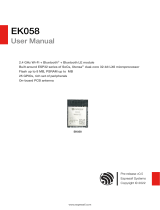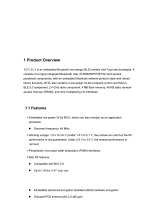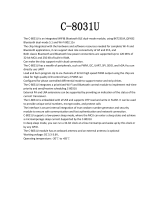2.5 Trace antenna designs
For a modular transmitter with trace antenna designs, see the guidance in Question
11 of KDB Publication 996369 D02 FAQ – Modules for Micro-Strip Antennas and
traces. The integration information shall include for the TCB review the integration
instructions for the following aspects: layout of trace design, parts list (BOM), antenna,
connectors, and isolation requirements.
a) Information that includes permitted variances (e.g., trace boundary limits, thickness,
length, width, shape(s), dielectric constant, and impedance as applicable for each
type of antenna);
b) Each design shall be considered a different type (e.g., antenna length in multiple(s)
of frequency, the wavelength, and antenna shape (traces in phase) can affect
antenna gain and must be considered);
c) The parameters shall be provided in a manner permitting host manufacturers to
design the printed circuit (PC) board layout;
d) Appropriate parts by manufacturer and specifications;
e) Test procedures for design verification; and
f) Production test procedures for ensuring compliance.
The module grantee shall provide a notice that any deviation(s) from the defined
parameters of the antenna trace, as described by the instructions, require that the
host product manufacturer must notify the module grantee that they wish to change
the antenna trace design. In this case, a Class II permissive change application is
required to be filed by the grantee, or the host manufacturer can take responsibility
through the change in FCC ID (new application) procedure followed by a Class II
permissive change application.
Explanation: Yes, The module with trace antenna designs, and This manual has been shown the layout
of trace design, antenna, connectors, and isolation requirements.
2.6 RF exposure considerations
It is essential for module grantees to clearly and explicitly state the RF exposure
conditions that permit a host product manufacturer to use the module. Two types of
instructions are required for RF exposure information: (1) to the host product
manufacturer, to define the application conditions (mobile, portable – xx cm from a
person’s body); and (2) additional text needed for the host product manufacturer to
provide to end users in their end-product manuals. If RF exposure statements and
use conditions are not provided, then the host product manufacturer is required to
take responsibility of the module through a change in FCC ID (new application).
Explanation: This module complies with FCC RF radiation exposure limits set forth
for an uncontrolled environment, This equipment should be installed and operated
with a minimum distance of 20 centimeters between the radiator and your body." This
module is designed to comply with the FCC statement, FCC ID is: 2AGN8-WF862.









